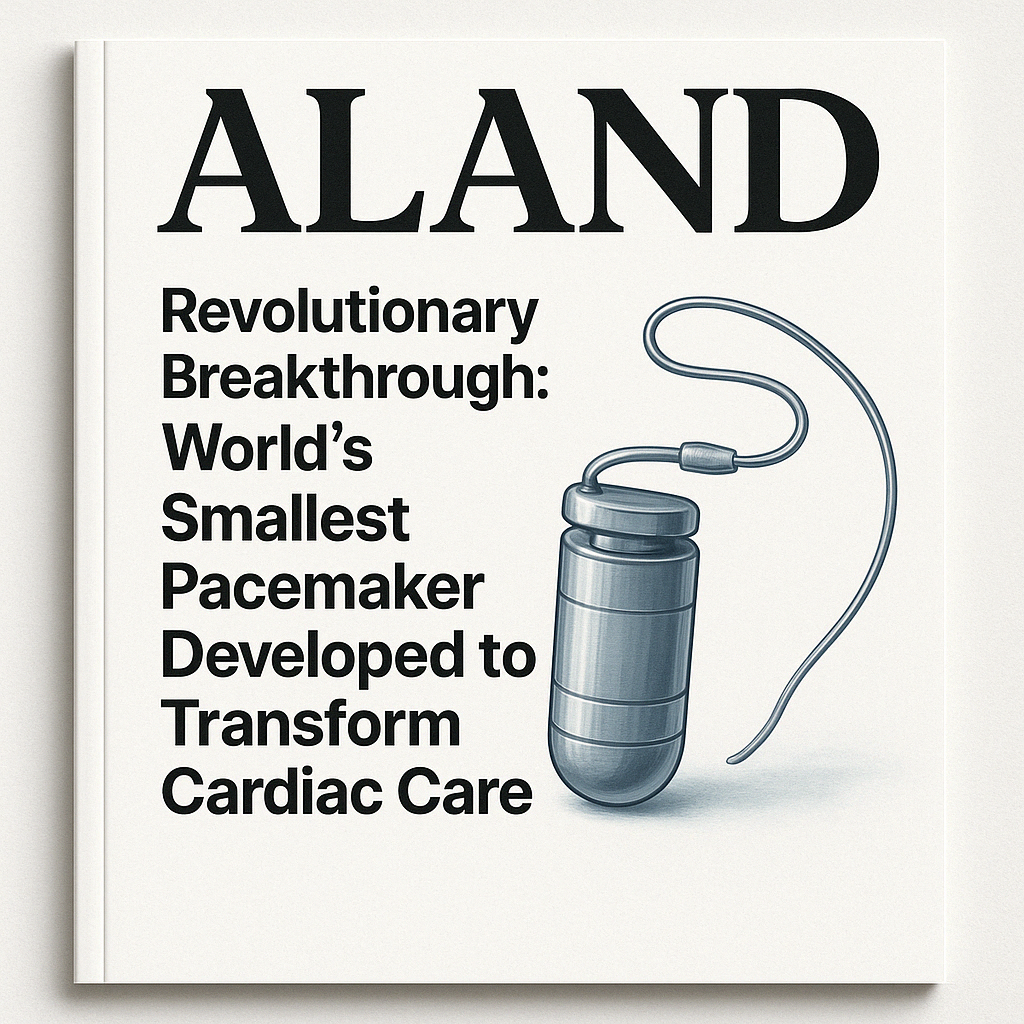Revolutionary Breakthrough: World's Smallest Pacemaker Developed to Transform Cardiac Care
Published Date: 20th Apr, 2025
You can listen to the Spotify Podcast on this topic
The Pacemaker: A Game-Changer in Cardiac Care
Traditional pacemakers, which are used to regulate heartbeats in patients with arrhythmias (irregular heartbeats), have been around for decades. While they have saved countless lives, these devices require surgical implantation, often involving a lengthy recovery process and increased risk of infection. Furthermore, traditional pacemakers are designed for long-term use, which can sometimes result in complications, particularly for elderly or frail patients.
Enter the world’s smallest pacemaker: a device that not only overcomes many of the limitations of traditional pacemakers but also introduces innovative features that set it apart. Measuring just 3.5 millimeters in diameter—about the size of a grain of rice—this new pacemaker can be injected directly into the heart through a minimally invasive procedure. The device is biodegradable, designed to break down naturally over time, eliminating the need for a second surgery to remove it.
Non-Invasive and Biodegradable: Key Advantages
The most remarkable aspect of this pacemaker is its non-invasive nature. Unlike conventional pacemakers, which require a surgical procedure to implant the device into the chest, this new pacemaker can be injected directly into the heart through a catheter, a procedure that requires minimal incisions or cuts. This non-invasive method significantly reduces recovery times, lowers the risk of complications, and provides a more comfortable experience for patients.
In addition to being non-invasive, the pacemaker is designed to biodegrade after a set period of time. This feature is particularly beneficial for patients who need temporary pacing due to conditions such as post-surgical recovery or acute arrhythmias. Once the device has served its purpose, it naturally breaks down and is absorbed by the body, eliminating the need for removal surgery. This biodegradable function also reduces the long-term risks associated with having a permanent device implanted, such as infection or device malfunction.
How It Works: The Technology Behind the Miniaturized Pacemaker
The miniaturized pacemaker is powered by advanced microelectronics and is designed to operate within the heart's natural electrical system. It functions by delivering small electrical impulses to the heart, helping it maintain a regular rhythm. The pacemaker is equipped with sensors that can monitor the heart’s activity in real-time, adjusting its pacing to suit the patient’s needs.
Developed using cutting-edge materials that are biocompatible and able to withstand the harsh environment of the heart, the pacemaker uses a small, flexible wire to deliver electrical impulses. The pacemaker also includes advanced microchips capable of wireless communication, which allows healthcare providers to monitor the patient’s condition remotely, adjusting settings and making real-time adjustments as necessary.
Potential Impact on Patients and Healthcare Systems
This breakthrough has the potential to significantly improve outcomes for patients with heart conditions, especially those who are elderly, frail, or have a high risk of complications from invasive surgeries. The non-invasive nature of the procedure, combined with the biodegradable feature, offers a unique solution for patients who may not be candidates for traditional pacemaker implantation due to age, health status, or other medical factors.
For healthcare systems, this innovation could reduce the need for costly surgeries and hospital stays. By minimizing the risks and recovery times associated with traditional pacemaker implantation, hospitals can free up resources for other critical procedures. Moreover, the ability to monitor patients remotely and adjust the pacemaker’s settings in real time could improve patient outcomes and reduce the need for frequent in-person visits.
A Step Forward for Cardiac Care
The development of this new pacemaker is a testament to the progress being made in the field of medical technology. With advancements like this, patients with heart conditions may soon have access to more personalized, less invasive treatment options. The introduction of such small and effective devices opens the door to further innovations in cardiac care, paving the way for even more sophisticated, tailored treatments in the future.
Researchers are optimistic that this breakthrough could lead to more innovative solutions for a variety of heart conditions, including arrhythmias, heart failure, and even more complex cardiac diseases. As the technology continues to evolve, there is the potential for even smaller and more efficient devices to be developed, further improving patient care and quality of life.
The Future of Medical Technology: Biodegradable Devices
The advent of biodegradable pacemakers signals a new era in the development of medical devices. As technology advances, more devices are being designed to serve temporary functions and dissolve once their job is complete. This trend could eventually extend to other medical treatments, from implants to drug delivery systems, offering a more sustainable and patient-friendly approach to healthcare.
This milestone in medical technology underscores the importance of ongoing innovation in healthcare, where small changes can have a profound impact on the way we treat, manage, and even cure diseases. As researchers continue to push the boundaries of what’s possible, the future of medicine looks brighter and more accessible than ever before.
The development of the world’s smallest pacemaker represents a monumental leap forward in the field of medical technology. This innovative device offers a safer, more efficient alternative to traditional pacemakers, with the potential to improve patient outcomes and reduce the burden on healthcare systems. As we continue to witness advancements in miniaturization and biodegradability, it’s clear that the future of medicine is moving toward more personalized, non-invasive, and sustainable solutions. The possibilities for the future of healthcare are limitless, and this pacemaker is just one example of the remarkable changes that lie ahead.
Date: 20th Apr, 2025

